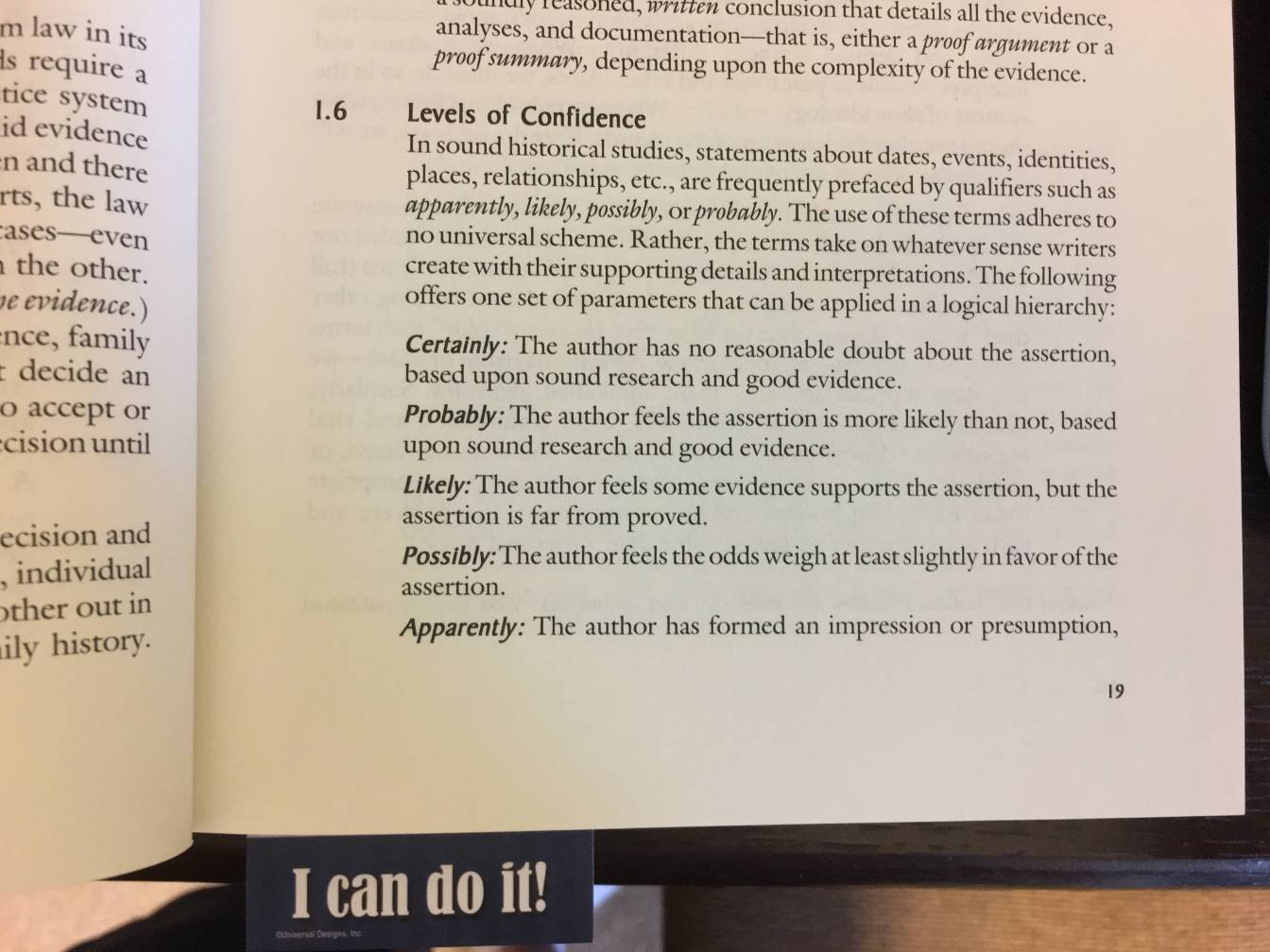Introduction
In genealogical research facts often have a way of becoming factoids once new evidence weighs against the old hypothesis. As a genealogist, we should stay away from declaring a research subject absolute and finished – instead we should quantify our analysis of the evidence by prefacing our statements with qualifiers. Using a current research project of mine, here is a statement without a qualifier attached:
Sally “Susan” Fisher was born between 1805 and 1815 in the sleepy little town of Lyndon Vermont.
Using the statement without a qualifier gives it more authority than I intend. This statement declares a fact which may not be true – was born between 1805 and 1815. I have not located a birth record for Sally that provides me a specific date, nor does any of the evidence point to a particular year in a convincing manner. What I do have are a set of sources which provide a range of years in which her birth likely occurred. There are possibly additional records that I have not yet unearthed, and any one of them may provide evidence of a birth year outside the range given. Here’s my revised statement:
Sally “Susan” Fisher was likely born between 1805 and 1815 in the sleepy little town of Lyndon Vermont.
Likely, as used in the above statement, is known as a qualifier – a qualifier is a word that limits or enhances another word’s meaning. Qualifiers affect the certainty and specificity of a statement [1]“Qualifiers–Grammar Rules and Examples,” Grammerly.com (https://www.grammarly.com/blog/qualifiers/ : accessed 1 May 2017), para. 1.
Using Qualifiers in Genealogy Writing

Elizabeth Shown Mills has identified six qualifiers that she offers as a set of parameters that can be applied in a logical hierarchy [2]Elizabeth Shown Mills, Evidence Explained, Citing History Sources from Artifacts to Cyberspace, Third Edition, (Baltimore, Maryland: Genealogical Publishing Company, 2015), pp. 19-20.. While she refers to her hierarchical example as “Levels of Confidence,” as the title of this page asserts, I believe these can be described better as “Levels of Conviction. But I don’t see reason in my research to reinvent well-hewn wheels, and I am resisting the temptation of realigning probably and likely in Elizabeth’s list below, no matter what Anthony D’Angelo says – so I will keep my research attuned to her scheme:
- Certainly: The author has no reasonable doubt about the assertion, based on sound research and good evidence.
- Probably: The author feels the assertion is more likely than not, based on sound research and good evidence.
- Likely: The author feels some evidence supports the assertion, but the assertion is far from proved.
- Possibly: The author feels the odds weigh at least slightly in favor of the assertion.
- Apparently: The author has formed an impression or presumption, typically based upon common experiences, but has not tested the matter.
- Perhaps: The author suggests that an idea is plausible, although it remains to be tested.
References
| ↑1 | “Qualifiers–Grammar Rules and Examples,” Grammerly.com (https://www.grammarly.com/blog/qualifiers/ : accessed 1 May 2017), para. 1. |
|---|---|
| ↑2 | Elizabeth Shown Mills, Evidence Explained, Citing History Sources from Artifacts to Cyberspace, Third Edition, (Baltimore, Maryland: Genealogical Publishing Company, 2015), pp. 19-20. |

